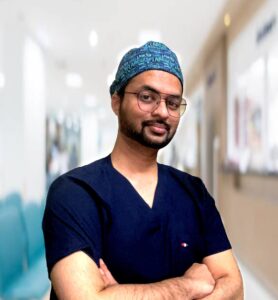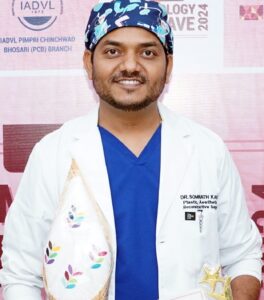-
Hysterectomy and Oophorectomy
Hysterectomy and Oophorectomy: A Comprehensive Guide
Hysterectomy and oophorectomy are two surgical procedures that play significant roles in women’s health. These surgeries are often performed to address various medical conditions, ranging from benign issues to more serious concerns such as cancer. Understanding these procedures, their purposes, benefits, risks, and recovery processes can empower individuals to make informed decisions about their health.
In this article, we will explore hysterectomy and oophorectomy in detail, including frequently asked questions.
What is a Hysterectomy?
A hysterectomy is a surgical procedure that involves the removal of the uterus. Depending on the specific needs of the patient, the surgery may also include the removal of the cervix, ovaries, and fallopian tubes. There are several types of hysterectomies:
- Total Hysterectomy: This procedure removes both the uterus and cervix.
- Subtotal (Supracervical) Hysterectomy: Only the upper part of the uterus is removed, leaving the cervix intact.
- Radical Hysterectomy: This extensive procedure removes the uterus, cervix, surrounding tissues, and sometimes part of the vagina. It is typically performed when cancer is present.
Reasons for Hysterectomy
Hysterectomies may be recommended for various reasons, including:
- Uterine Fibroids: Noncancerous growths in the uterus that can cause pain, heavy bleeding, or other complications.
- Endometriosis: A condition where tissue similar to the lining inside the uterus grows outside it, leading to pain and potential fertility issues.
- Uterine Prolapse: When the uterus descends into the vaginal canal due to weakened pelvic muscles.
- Chronic Pelvic Pain: Persistent pain that may not respond to other treatments.
- Cancer: Hysterectomy may be necessary for cancers of the uterus, cervix, or ovaries.
What is an Oophorectomy?
An oophorectomy is a surgical procedure that involves removing one or both ovaries. The ovaries are reproductive glands responsible for producing hormones such as estrogen and progesterone and for releasing eggs for potential fertilization.
Types of Oophorectomy
There are two main types of oophorectomy:
- Unilateral Oophorectomy: Removal of one ovary.
- Bilateral Oophorectomy: Removal of both ovaries.
Reasons for Oophorectomy
Oophorectomies may be performed for several reasons:
- Ovarian Cysts: Large or persistent cysts that cause pain or other complications may necessitate removal.
- Endometriosis: In severe cases where endometriosis affects ovarian tissue.
- Ovarian Cancer: Removal of ovaries may be necessary if cancer is diagnosed or suspected.
- Genetic Risk Reduction: Women with a family history of breast or ovarian cancer may choose to undergo prophylactic oophorectomy to reduce their risk.
The Surgical Procedures
Hysterectomy Procedure
- Preparation: Patients will undergo preoperative assessments to ensure they are fit for surgery. Discussions regarding anesthesia options will also take place.
- Surgical Techniques:
- Abdominal Hysterectomy: Involves a larger incision in the abdomen to remove the uterus.
- Vaginal Hysterectomy: The uterus is removed through the vagina with no visible abdominal scars.
- Laparoscopic Hysterectomy: Minimally invasive technique using small incisions and a camera for guidance.
- Recovery: Hospital stays typically range from one to three days depending on the surgical approach. Full recovery can take six to eight weeks.
Oophorectomy Procedure
- Preparation: Similar to hysterectomy preparation, patients will have assessments and discussions about anesthesia.
- Surgical Techniques:
- Laparoscopic Oophorectomy: A minimally invasive technique using small incisions and a camera.
- Open Oophorectomy: A larger incision in the abdomen if needed.
- Recovery: Recovery time varies; laparoscopic procedures generally allow for quicker recovery than open surgeries.
Benefits of Hysterectomy and Oophorectomy
Benefits of Hysterectomy
- Relief from symptoms associated with fibroids or endometriosis.
- Elimination of heavy menstrual bleeding or chronic pelvic pain.
- Prevention of uterine cancer progression in at-risk individuals.
Benefits of Oophorectomy
- Removal of diseased tissue in cases of ovarian cancer or severe endometriosis.
- Reduction in cancer risk for individuals with genetic predispositions.
- Alleviation of symptoms caused by ovarian cysts or other conditions.
Risks and Considerations
Both procedures carry potential risks:
Risks Associated with Hysterectomy
- Infection at incision sites
- Blood clots
- Damage to surrounding organs (bladder, bowel)
- Changes in hormonal balance if ovaries are removed (especially in younger women)
Risks Associated with Oophorectomy
- Hormonal changes leading to menopause symptoms if both ovaries are removed
- Surgical complications such as infection or bleeding
- Long-term health risks related to early menopause (e.g., osteoporosis)
Frequently Asked Questions (FAQs)
Ideal candidates are individuals experiencing significant symptoms related to their reproductive health that have not responded to other treatments. A thorough discussion with a healthcare provider can help determine if surgery is appropriate.
Hysterectomies typically take 1 to 3 hours depending on the surgical technique used. Oophorectomies generally take about 1 hour but can vary based on complexity.
Recovery times vary:
- Hysterectomy recovery can take 6 to 8 weeks for full healing.
- Oophorectomies usually allow patients to return to normal activities within a few weeks.
If both ovaries are removed during an oophorectomy, you will enter menopause immediately after surgery. If your ovaries remain intact after a hysterectomy, you will not experience menopause until your natural age-related decline occurs.
Yes, both procedures eliminate the possibility of natural conception since they involve removing reproductive organs essential for fertility.
Depending on your condition, non-surgical options such as medication or hormone therapy may be available. Discuss these alternatives with your healthcare provider.
During your consultation, your doctor will review your medical history, discuss your symptoms and concerns, evaluate your anatomy through physical examination or imaging tests, explain potential risks and benefits of surgery, and outline what you can expect before and after surgery.
Conclusion
Hysterectomy and oophorectomy are significant surgical procedures that can provide relief from various reproductive health issues while improving quality of life for many individuals. Understanding these procedures’ benefits, risks, and recovery processes can empower patients to make informed decisions about their health care options.
If you’re considering either procedure or have more questions about whether it’s right for you, consult with a qualified healthcare provider who can guide you through every step—from initial evaluation through post-operative care—ensuring you achieve your desired results safely and effectively.Take control of your health today! Schedule a consultation with an expert who can help you understand all aspects of hysterectomy and oophorectomy!

Dr. Akash, is a well trained Cosmetic Plastic surgeon in Breast surgery techniques. He has worked with top cosmetic surgeons in India and implements the gained knowledge into defining the art of cosmetic surgery to treat his patients and give them a naturally curved and contoured Breasts that they desire.
We, at Sculpt Derma, are committed to provide customized and transparent facial rejuvenation services. For any queries or booking an appointment click the button, we will get back to you soon.

Dr. Somnath stands at the forefront of breast aesthetic surgery as an expert Cosmetic Plastic surgeon. His exceptional training and hands-on experience alongside renowned surgeons across India have refined his precision in cosmetic procedures. Combining artistic vision with surgical excellence, he specializes in creating harmonious, natural-looking breast transformations tailored to each patient’s unique desires.
At Sculpt Derma, transparency and personalization are the cornerstones of our facial rejuvenation services. For appointments or inquiries, click the button below, and our team will promptly assist you.
